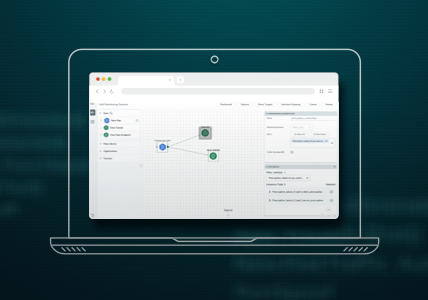Your Network and Their Cloud: Five Steps to Management Success
This article is Part 3 of a three-part series by guest IDC blogger Mark Leary, network analytics and automation. For more, read Part 1 and Part 2.
What to Do When “the Cloud” Drives Network Integrity and Service Delivery
In the first two blogs in this series, I outlined the rising challenges and trending solutions associated with building and operating a resilient digital infrastructure that is growing ever more dependent on cloud services — and cloud service providers. In this installment of the series, I will offer five steps to success in making the best use of connected cloud services and assuring that cloud service networks are more closely coupled to your own enterprise network infrastructure and network management solutions and practices.
Step #1: Organize for Success
First, you need to get your own house in order if you are to operate your private network infrastructure and multiple public cloud networks as one. As pointed out in Blog #2 in this series, enterprises have made significant strides in formally unifying NetOps and SecOps teams over the course of the pandemic. This has driven increased use of common tools and shared data, a strengthened security posture, and more rapid threat detection and mitigation.
With cloud services now a prime determinant of positive digital experiences and a significant investment area, cloud oversight efforts must incorporate network engineering and operations teams and fully leverage proven network management practices and solutions — whether on premises or cloud-based. According to IDC research, improving teamwork across IT technology domains (such as networking, security, cloud, and application development) and functional areas (like operations, engineering, support, and architecture) continues to be a high priority for both business and IT leaders.
Closer interaction across IT teams naturally lends itself to more concerted efforts focused on serving up the best possible end-to-end digital experience, making optimum use of underlying connected systems and services, assuring solid security and compliance across hybrid and multi-cloud environments, and driving digital innovation across both IT and the business.
Step #2: Arm Your Staff
Complete visibility and control over your on-premises network — and all its associated components, connections, resources, users, smart devices, and exchanges — represents a core requirement in this hyper-connected digital era. And yet, IDC research indicates that a good portion of organizations have only limited visibility and control over their own private network infrastructure. Now, consider public cloud networks as core pieces of the enterprise network, and it is highly likely that visibility and control are even further limited. In fact, for many organizations, cloud service networks represent a blind spot in their security and network management efforts.
Given the vital role cloud services play in today’s resilient digital infrastructures, it is imperative that visibility and control are equally served across both private on-premises and public cloud networks. This means that deep observability capabilities must be prioritized when evaluating network analytics solutions. The more cloud service network intelligence, insights, and integration support offered by a solution — whether on premises or cloud-based — the better!
However, solidifying your own cloud network analytics capabilities does not let your cloud service providers off the hook. As owners and operators of their own network infrastructures, they must fill in the gaps (and eliminate the blind spots) in cloud service network intelligence and insights by ensuring monitoring capabilities span the entirety of their resilient digital infrastructure. Fortunately, the IaaS hyper-scalers are stepping up here. Microsoft Azure, Google, and AWS all offer multiple network analytics solutions of their own, providing complementary views and key contributions to subscriber network management efforts.
Step #3: Formalize Cloud Support
Step #1 closely ties network, security, and cloud operations/engineering teams together. Step #2 aligns management solutions to cloud-related requirements. Both steps set the stage for improved and more impactful network-focused interactions with your cloud service providers.
Many organizations already have the talent and tools in place to make this happen. Now, you must establish agreed-upon procedures and exchanges that facilitate collaboration between you and your cloud service provider(s) — whether that collaboration is focused on problem-solving, operational improvements, technology innovation, or cost savings. This includes such things as cross-training your networking staff in cloud services (and cloud network analytics); prioritizing integration features (like APIs and data extraction); establishing data exchange standards (such as format and timing); and assigning principal network contacts for subscriber and provider.
Where possible, it is nice to establish consistent practices and standards across your hybrid and multi-cloud infrastructure. Where variances are required, try to minimize them by grouping by provider type (IaaS, SaaS, and so forth) or finding the most common denominators. And I’ll state the obvious here just to be sure: Service providers are much more accepting of your formalization efforts before service contracts are signed. Align before you sign!
Step #4: Ease Integration Efforts
Not all integration efforts are equal. Examine your network analytics solution providers to determine how their integration and partnership efforts match up with your most significant cloud services providers or security solution suppliers. Do they place as much emphasis on Azure as Google? Or AWS? Or Salesforce? Or O365? Or RSA? Or Splunk? If you operate a multi-cloud environment, does your solution provider emphasize hybrid and multi-cloud capabilities? And do they emphasize the right mix of multiple cloud providers?
It is also vitally important to judge the extent of these partnerships. Partnerships can often revolve around solution development, resulting in advanced features for a specific cloud service provider’s offering; shared intelligence and insights across complementary management tools; and ready integration and adoption within multiple IT technology domains (such as network, security, and cloud). Matching current and road map capabilities that closely couple on-premises management systems (like network and security) and cloud service management intelligence addresses key functional requirements. But don’t be distracted by these shiny new product enhancements.
You must also pay attention to how integrated solutions and partnership ecosystems support solution delivery and match your practical requirements. Here, offering advanced levels of cloud and multi-cloud support, cloud service provider-specific expertise, proven security services, and established best practices for shared customers assure that solutions and services deliver to their full potential. Ideally, both development and delivery are enhanced by the partnership(s) matching your environment. With cloud services being core to your network infrastructure, assuring rock-solid operation is as important or even more important than activating new cloud-related management features.
Step #5: Keep Things Simple
The use of cloud services — especially multi-cloud services — heightens the complexity of an already complex network infrastructure. Cloud services offer much in the way of flexibility, elasticity, reach, and savings. They also add more connections, more providers, more integration points, more tools and data, and potentially more vulnerabilities and risks to a management domain already under tremendous pressure to perform and protect. You must apply solutions that ease the collection, management, analysis, and sharing of network-level data; the correlation of events and detection of anomalies; and the presentation of information and insights and interactions with operators.
At the same time, all these functions must be unified across both private and public network segments. In today’s cloud-first, hybrid cloud, and multi-cloud environments, managing the network end-to-end must cover and coordinate both in-house and external network resources and services. To do this effectively and efficiently, you must leverage your own best practices, those of your solution suppliers, those of your service providers, and, of increasing importance, those practices that join all three together. Getting the most from all contributors — staff, system suppliers, and service providers — ensures the proper streamlining of network designs, deployments, operations, and improvements.
Featured Webinars
Hear from our experts on the latest trends and best practices to optimize your network visibility and analysis.

CONTINUE THE DISCUSSION
People are talking about this in the Gigamon Community’s Hybrid/Public Cloud group.
Share your thoughts today









